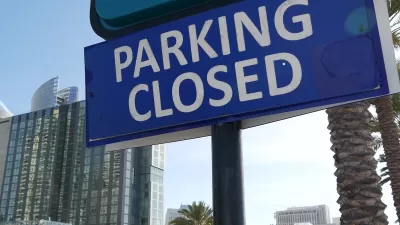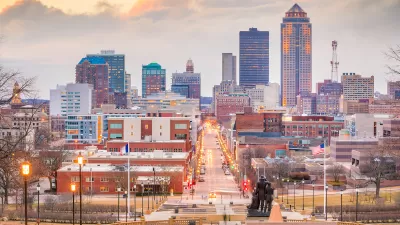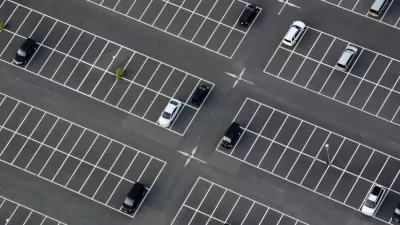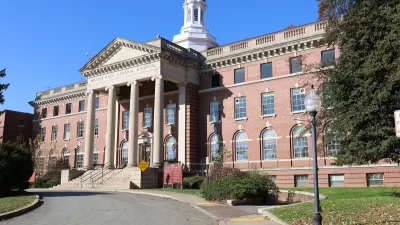Surface parking lots take up as much as a third of downtown land in some cities, dragging down tax revenue and redevelopment prospects.

In an opinion piece in The Washington Post, Travis Meier calls on cities to enact policies that promote the redevelopment of the many underused or vacant surface parking lots that occupy, on average, one-quarter of land in American city centers. “Our nation’s downtowns are full of these neglected spaces — surface lots of crumbling asphalt and weeds, emblematic of absentee property owners and a disregard for the public good. Other lots, not entirely abandoned, are often underused and unkept.”
According to Meier, “City centers need density and connection; surface parking lots destroy both.” When it comes to local tax revenue, surface parking lots are also a losing proposition for cities, limiting tax revenue and slowing down the development process. “The lot is assessed at a low rate, so corporations and landowners sit on their cheap land, waiting years for a top-dollar bidder as downtown real estate gets more expensive.”
One proposal that would spur more development of vacant parking lots is a land value tax, which assesses properties based on potential value, thus eliminating the incentive for owners to sit on the land. “City leaders should also encourage land sales by actively seeking buyers, offering financial incentives and reorienting preexisting blight programs.”
FULL STORY: Opinion: Empty parking lots are a drag on America’s downtowns

Planetizen Federal Action Tracker
A weekly monitor of how Trump’s orders and actions are impacting planners and planning in America.

Congressman Proposes Bill to Rename DC Metro “Trump Train”
The Make Autorail Great Again Act would withhold federal funding to the system until the Washington Metropolitan Area Transit Authority (WMATA), rebrands as the Washington Metropolitan Authority for Greater Access (WMAGA).

The Simple Legislative Tool Transforming Vacant Downtowns
In California, Michigan and Georgia, an easy win is bringing dollars — and delight — back to city centers.

Albuquerque’s Microtransit: A Planner’s Answer to Food Access Gaps
New microtransit vans in Albuquerque aim to close food access gaps by linking low-income areas to grocery stores, cutting travel times by 30 percent and offering planners a scalable model for equity-focused transit.

This City Will Pay You to Meet Your Neighbors
A North Kansas City grant program offers up to $400 for residents to throw neighborhood block parties.

Commentary: Our Silence Will Not Protect Us
Keeping our heads down and our language inoffensive is not the right response to the times we’re in. Solidarity and courage is.
Urban Design for Planners 1: Software Tools
This six-course series explores essential urban design concepts using open source software and equips planners with the tools they need to participate fully in the urban design process.
Planning for Universal Design
Learn the tools for implementing Universal Design in planning regulations.
Smith Gee Studio
City of Charlotte
City of Camden Redevelopment Agency
City of Astoria
Transportation Research & Education Center (TREC) at Portland State University
US High Speed Rail Association
City of Camden Redevelopment Agency
Municipality of Princeton (NJ)





























